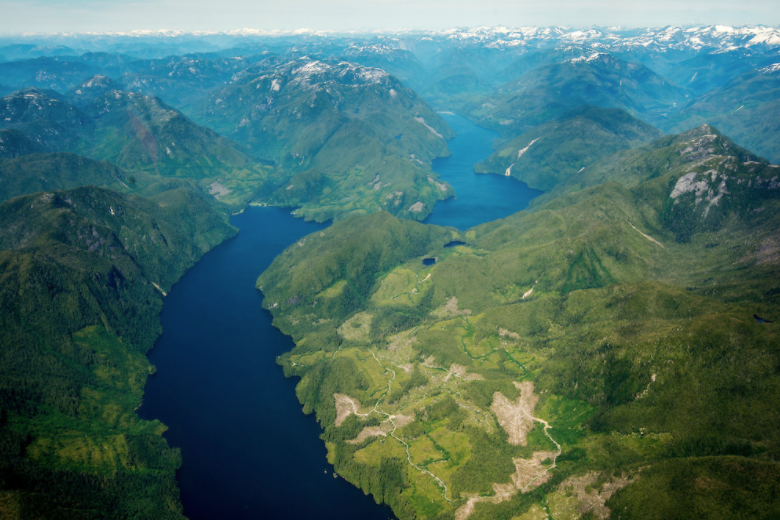Musgamagw Dzawada’enuxw Territory
First Nations
The Broughton Archipelago is the traditional territory of the Musgamagw Dzawada’enuxw Nation. Its members remain living in their villages of U’kwa’nalis at the head of Kingcome Inlet and Gwayasdums on Gilford Island. Shell middens are the foundation of every beach accessible by canoe. Pictographs appear on cliff faces. Culturally modified trees and traditional clam gardens are also found here – all evidence of a thriving marine culture that depended on an abundance of ocean species.
Marine habitat for diverse species
The archipelago is home to an astonishing diversity of marine species – minke, humpback and killer whales (orca), harbour seals, Pacific white-sided dolphins, Dall’s porpoises, bears, wolves, deer, cougars and BC salmon from seven major salmon rivers.
- Pacific salmon play a critical role in the archipelago’s ecosystem. They feed over 100 species and fertilize the trees that make the oxygen we breathe. Salmon once supplied an important commercial fishery, but have declined severely with salmon farming expansion. They feed bears, wolves and eagles in the rivers. Raincoast’s research demonstrates the impact of sea lice from salmon farms on dwindling Pacific salmon populations.
- Approximately 275 to 280 northern resident killer whales (orca) use the perimeter waters of the archipelago from summer to fall to feed, rest, travel, socialize and rub on shoreline areas known as ‘rubbing beaches’. They remain wary, however, of entering the archipelago after exposure to the intense volume of acoustic harrassment devices used to scare seals away from salmon farms in the early 1990s.
- Once wiped out by commercial whaling in the area, North Pacific humpback whales began returning in the early 1980s. They now feed in the prime herring grounds of the deep, cold waters of Blackfish Sound and Queen Charlotte Straits. Raincoast Research began a photo-identification catalogue of these whales that continues today with other researchers.
- A diversity of sea and shorebirds use the area – red-necked grebes, phalaropes, marbled murrelets, common Murres, rhinoceros auklets, great blue herons, eagles, loons and shearwaters.

